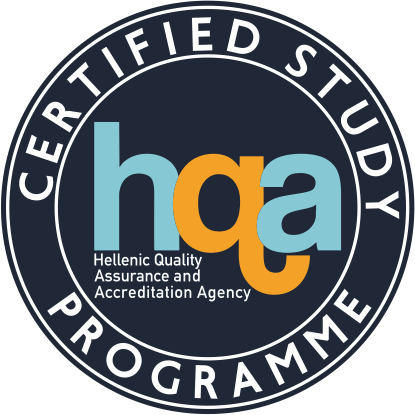| School | Natural Sciences | ||||||||
| Academic Unit |
Geology Department | ||||||||
| Level of Studies |
Undergraduate | ||||||||
| Course Code |
GEO_308 | ||||||||
| Εξάμηνο σπουδών | 3ο | ||||||||
| Course Title |
Seminar-English for Geology | ||||||||
| Independent Teaching Activities |
Lectures, seminars and laboratory work | ||||||||
| Weekly Teaching Hours |
3 L | ||||||||
| Credits | 3 | ||||||||
| Course Type |
Scientific Area and Skills Development | ||||||||
| Prerequisite Courses |
Good knowledge of English is recommended towards students’ successful completion of the course (B1/B2 level). Attendance and participation is compulsory . Participants should have a good passing grade (over 7/10) in English for Geology 1 and 2 courses . | ||||||||
| Language of Instruction & Examinations |
English | ||||||||
| Is the Course offered to Erasmus Students |
Υes | ||||||||
| Course Web-Page (URL) | https://eclass.upatras.gr/courses/GEO349/ | ||||||||
| Learning Outcomes |
By the end of this course the student:
|
||||||||
| General Competences |
|
||||||||
| Syllabus |
|
||||||||
| Delivery | Face to face (Lectures in class) | ||||||||
| Use of Information & Communication Technology |
Use of Information and Communication Technologies (e.g. powerpoint) in teaching. The study material of the course for each chapter isuploaded on the internet, in the form of a series of ppt files, where from the students can freely download them using a password which is provided to them at the beginning of the course. | ||||||||
| Teaching Methods |
|
||||||||
| Student Performance Evaluation |
Assessment is based on final exam + class participation and Powerpoint presentation | ||||||||
| Attached Bibliography |
|
| School | Natural Sciences | ||||||||||
| Academic Unit |
Geology Department | ||||||||||
| Level of Studies |
Undergraduate | ||||||||||
| Course Code |
GEO_307 | ||||||||||
| Εξάμηνο σπουδών | 3ο | ||||||||||
| Course Title |
Computer applications in Earth Sciences | ||||||||||
| Independent Teaching Activities |
Lectures and laboratory work | ||||||||||
| Weekly Teaching Hours |
2 (lect.), 2 (lab.) | ||||||||||
| Credits | 4 | ||||||||||
| Course Type |
General Background, Field of Science (Petrology) and Skills Development (software use) | ||||||||||
| Prerequisite Courses |
No | ||||||||||
| Language of Instruction & Examinations |
Greek. Teaching may be however performed in English in case foreign students attend the course. | ||||||||||
| Is the Course offered to Erasmus Students |
Yes | ||||||||||
| Course Web-Page (URL) | https://eclass.upatras.gr/courses/GEO320/ | ||||||||||
| Learning Outcomes |
By the end of this course the student will be able to:
By the end of this course the student will, furthermore, have developed the following general comptence):
|
||||||||||
| General Competences |
|
||||||||||
| Syllabus |
Lectures and Laboratory exercises (hands-on)
|
||||||||||
| Delivery | Lectures and laboratory work face to face. | ||||||||||
| Use of Information & Communication Technology |
Use of Information and Communication Technologies (ICTs) (e.g. powerpoint) in teaching. | ||||||||||
| Teaching Methods |
|
||||||||||
| Student Performance Evaluation |
Percentages are valid t only when the student secures the minimum mark of 5 in the final written examination Greek grading scale: 1 to 10. Minimum passing grade: 5. Grades <3 correspond to ECTS grade F. Grade 4 corresponds to ECTS grade FX. For the passing grades the following correspondence normally holds: 5 <-» E, 6 <-> D, 7 <-> C, 8 <-> Β and >9 <-> A |
||||||||||
| Attached Bibliography |
- Related academic journals:
|
| School | Natural Sciences | ||||||||||||||||
| Academic Unit |
Geology Department | ||||||||||||||||
| Level of Studies |
Undergraduate | ||||||||||||||||
| Course Code |
GEO_404 | ||||||||||||||||
| Εξάμηνο σπουδών | 3ο | ||||||||||||||||
| Course Title |
Geophysics | ||||||||||||||||
| Independent Teaching Activities |
Lectures and laboratory work | ||||||||||||||||
| Weekly Teaching Hours |
2 (lectures), 2 (laboratory) | ||||||||||||||||
| Credits | 6 | ||||||||||||||||
| Course Type |
Basic, General Knowledge, Scientific area | ||||||||||||||||
| Prerequisite Courses |
Physics I, Physics II. | ||||||||||||||||
| Language of Instruction & Examinations |
Greek | ||||||||||||||||
| Is the Course offered to Erasmus Students |
Υes, (in English) | ||||||||||||||||
| Course Web-Page (URL) | https://eclass.upatras.gr/courses/GEO343/ | ||||||||||||||||
| Learning Outcomes |
This course is introductory to the concepts and applications of geophysics, after its successful completion the student should be able to:
Knowledge Understanding of principles of Solid Earth geophysics and subjects concerning geoelectrics, geomagnetism, gravitational field of the Earth, heat flow in earth’s interior etc In addition, understanding of the theoretical basis/ principles of the main geophysical methods (seismic, geoelectric, geomagnetic, gravity, electromagnetic, GPR) Skills
Abilities
|
||||||||||||||||
| General Competences |
By the end of this course the student will, furthermore, have developed the following skills (general abilities):
|
||||||||||||||||
| Syllabus |
|
||||||||||||||||
| Delivery | Lectures in class, laboratory exercises and field demonstrations | ||||||||||||||||
| Use of Information & Communication Technology |
|
||||||||||||||||
| Teaching Methods |
|
||||||||||||||||
| Student Performance Evaluation |
The assessment is done in the following way:
|
||||||||||||||||
| Attached Bibliography |
|
| School | Natural Sciences | ||||||||||||
| Academic Unit |
Geology Department | ||||||||||||
| Level of Studies |
Undergraduate | ||||||||||||
| Course Code |
Geo_304 | ||||||||||||
| Εξάμηνο σπουδών | 3ο | ||||||||||||
| Course Title |
Evolution of Life - Palaeontology | ||||||||||||
| Independent Teaching Activities |
Lectures and laboratory work | ||||||||||||
| Weekly Teaching Hours |
2 (lect.), 2 (lab.) | ||||||||||||
| Credits | 5 | ||||||||||||
| Course Type |
Basic and Skills Development | ||||||||||||
| Prerequisite Courses |
Typically, there are not prerequisite courses | ||||||||||||
| Language of Instruction & Examinations |
Greek | ||||||||||||
| Is the Course offered to Erasmus Students |
Υes, teaching may be however offered in English in case foreign students attend the course. | ||||||||||||
| Course Web-Page (URL) | https://eclass.upatras.gr/courses/GEO326/ (in Greek) | ||||||||||||
| Learning Outcomes |
This module is a basic introduction in the field of Palaeontology. Students become acquainted with fossils, which consist the evidence of evolution, and their use in geological research. Also, during this module information concerning the main groups of organisms that are commonly found as fossils are provided. Since the first moment that life appeared on earth 4 billion years ago, life on earth is under constant evolution. New species appear, while others disappear. Fossils are the unquestionable testimony of this evolution through the geological ages, thus due to their continuous change they allow us to record and understand the age of the rocks that they were found in, as well as the prevailing palaeoenvironmental conditions when they were still alive, or when they died and were deposited in the sediments. Upon successful completion of this course the students will be able to:
|
||||||||||||
| General Competences |
Generally, by the end of this course the student will, furthermore, have developed the following general abilities:
|
||||||||||||
| Syllabus |
|
||||||||||||
| Delivery | Lectures and laboratory practice face to face. Observation and study of real fossils (hand specimens) during laboratory practice | ||||||||||||
| Use of Information & Communication Technology |
Use of Information and Communication Technologies (ICTs) (powerpoint) in teaching. Supporting teaching and communication through e-class. The lectures content of the course for each chapter are uploaded on the e-class platform, in the form of a series of ppt files, from where the students can freely download them. | ||||||||||||
| Teaching Methods |
|
||||||||||||
| Student Performance Evaluation |
Ι) Oral final examination. The mark consists 50% of the final grade. The examination will include:
ΙΙ. Written reports following the completion of each laboratory practical. The mean mark of the reports consists the other 50% of the final grade. Minimum passing grade: 5. Final Course Grade (FCG) FCG = ( Oral exam + practical reports ) / 2 The language of assessment is in Greek. If foreign students attend the course, their assessment in English. |
||||||||||||
| Attached Bibliography |
|
| School | Natural Sciences | ||||||||||||
| Academic Unit |
Geology Department | ||||||||||||
| Level of Studies |
Undergraduate | ||||||||||||
| Course Code |
GEO_305 | ||||||||||||
| Εξάμηνο σπουδών | 3ο | ||||||||||||
| Course Title |
Geochemistry | ||||||||||||
| Independent Teaching Activities |
Lectures, seminars and laboratory work | ||||||||||||
| Weekly Teaching Hours |
2 (lect., 2 (Lab) | ||||||||||||
| Credits | 5 | ||||||||||||
| Course Type |
Field of Science (Synthetic Organic Chemistry) and Skills Development (Experimental Organic Chemistry-2) | ||||||||||||
| Prerequisite Courses |
No | ||||||||||||
| Language of Instruction & Examinations |
Greek | ||||||||||||
| Is the Course offered to Erasmus Students |
No | ||||||||||||
| Course Web-Page (URL) | https://eclass.upatras.gr/courses/GEO349/ | ||||||||||||
| Learning Outcomes |
The training of the students in the geochemical processes, which are taking place in the hydrosphere ,lithosphere and biosphere,. In the laws which control the translocation and movement of the elements from one part of land to another, and their significant effects on the climate and humans. Also, the students will be prepared to understand the genesis of rocks ,soils and sediments The students posses the intellectual capacity and practical skills and has the ability:
|
||||||||||||
| General Competences |
|
||||||||||||
| Syllabus |
|
||||||||||||
| Delivery | Lectures, seminars and laboratory work face to face. | ||||||||||||
| Use of Information & Communication Technology |
|
||||||||||||
| Teaching Methods |
|
||||||||||||
| Student Performance Evaluation |
I)Assessment of the lab exercise
II) Final written exam of the Coarse
|
||||||||||||
| Attached Bibliography |
|





